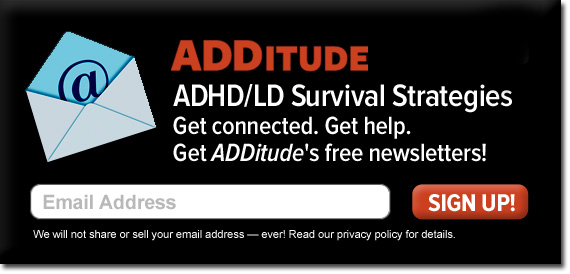One oft-heard complaint about complementary therapies to treat attention deficit disorder (ADD or ADHD) is that there are no controlled studies to support their claims. Not so with working-memory training, which was developed by a company called Cogmed, in conjunction with the Karolinska Institute, a medical university based in Stockholm. A 2005 study conducted by the institute showed that five weeks of therapy reduced symptoms of inattention and hyperactivity in children.
An uncontrolled study, published earlier this year by the University of Notre Dame, found similar results. ADDitude talked with Bradley Gibson, Ph.D., lead author of the Notre Dame study, and Barbara Ingersoll, Ph.D., a clinical associate professor in West Virginia University’s department of behavioral medicine and psychiatry and a Cogmed trainer, to find out how the program works.
What is working memory?
It's the ability to hold onto information long enough to accomplish a specific goal. You hold a phone number in your mind as you dial it, or you hold a task in mind — organizing your room, say — as you work on it. We use working memory throughout the course of a day.
How does improving his working memory help someone with ADHD become more focused?
When you improve working memory, you improve fluid IQ — the ability to solve problems or adapt to situations as they occur. Most people who complete memory training become more alert to their surroundings. They are also more aware of social cues. [Learn about the age-by-age working-memory "milestones" here.]
Parents often report that their kids become more “mature.” They take charge of their hygiene and do chores without being nagged. They remember to bring books and materials to and from school.
How does Cogmed working-memory training work?
A patient logs on to the working-memory program, which is downloaded on his home computer. He completes eight exercises, each consisting of 15 trials. The exercises are in a video game format — with colorful graphics and crisp sound.
In one exercise, he shoots down floating asteroids; in another, he recalls numbers in the reverse order in which they are given; in another, he remembers the sequence in which rows of lights turn on. The patient uses his computer mouse to punch in the answers — and earns points along the way.
The program stays a step ahead of the person’s ability, making exercises increasingly harder. If it's a child with ADHD, a trainer calls once a week to talk with the parents, troubleshoot, and encourage the child.
Does the training work as well with girls as with boys, for both children and adults?
It has been successful with young and old, and with both sexes. The training is rigorous, so few children under seven can stick with it. Children recently diagnosed with ADHD should have their medication titrated before beginning training.
How long is the training, and how much does it cost?
The training runs five weeks, five days a week, an hour a day. It ranges in price from $1,500 to $2,000, and it is not covered by most medical insurance plans.
What percentage of patients show improvement after the training?
Children have been studied most extensively, and about 75 to 80 percent of kids show improvement — that is, inattention and hyperactivity are reduced. Karolinska Institute researchers did functional MRIs of the children they studied. The MRIs showed physical changes in the brain’s pre-frontal and parietal regions after completing the training. At six-month and one-year follow-ups, about 80 percent of subjects maintained their working-memory gains or improved on them.
Are there any side effects?
There have been no observed side effects. It doesn’t affect other therapies. Most people who participate in the program are on ADHD medication.
Is working-memory training a substitute for medication?
The program does not claim to replace medication. While many ADHDers get good results on meds, drugs don’t usually manage all symptoms. Improving working memory can address those problems.
Read more about the Cogmed program at cogmed.com's Frequently Asked Questions page.

This article comes from the December/January 2008 issue of ADDitude.
To read this issue of ADDitude in full, purchase the back issue and SUBSCRIBE NOW to ensure you don't miss another issue.





